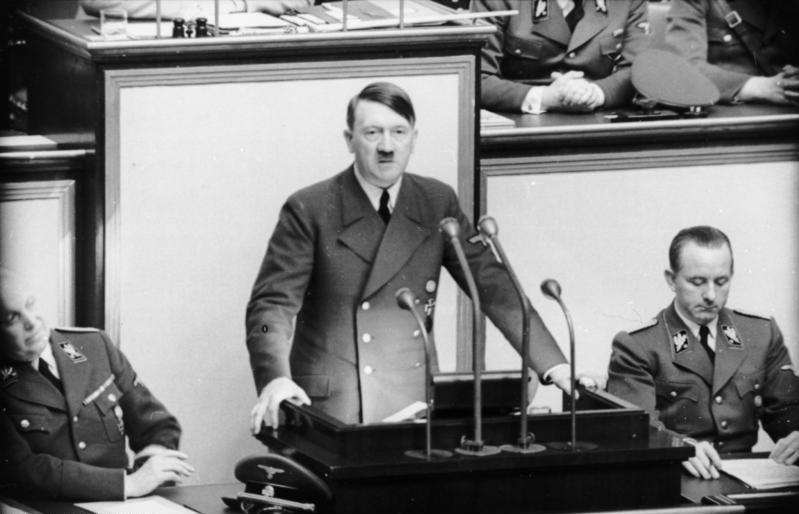Austerity policies in Germany were key to driving Hitler to power
An academic study involving Gregori Galofré-Vilà, a postdoctoral researcher at the UPF Department of Economics and Business, analyses the case of the rise of Nazism in Germany in the early 1930s. Research shows that fiscal austerity is related to the rise of populist political parties and such groups take advantage of vulnerable populations that have most suffered during times of economic hardship.

The response to the debt of the 2007-2008 financial crisis caused many Western countries to adopt austerity measures. Currently, stimulus packages in the face of the current Covid-19 pandemic may lead to the same situation. What undesired effects could such a reaction by governments cause on a political and on a social level?
An academic study uses a historical example, the rise of the Nazi Party in Germany in the 1930s after the Great Depression, concluding that the austerity measures that were applied in this context exacerbated social suffering and contributed to the political unrest that paved the way for Hitler's rise to power.
The authors of the paper, which will soon be published in Journal of Economic History under the title “Austerity and the Rise of the Nazi party” and regarding which an article has recently been published in the journal Vox.eu, are: Gregori Galofré-Vilà, a postdoctoral researcher in Political Economics at the Department of Economics and Business at UPF and at the IPEG; Christopher Meissner (University of California); Martin McKee (London School of Hygiene and Tropical Medicine), and David Stuckler (University of Oxford).
The researchers studied data from the official German statistics of more than a hundred cities and a thousand smaller districts for the period encompassing four federal elections held between 1930 and 1933.
“Austerity caused substantial human suffering and increased inequality and inequity”.
This analysis has served to demonstrate that the areas most severely affected by austerity had relatively higher vote shares for the Nazi Party. Specifically, each standard deviation increase in the depth of austerity was associated with between a two and five percentage point increase in vote share for the Nazis.
“Austerity caused substantial human suffering and increased inequality and inequity. At a time when people needed the most from their government, the government failed them, and the citizens were lured by the siren calls of radical populist parties”, the researchers assert.
Austerity measures cause economic insecurity
The austerity measures implemented through a series of emergency decrees that largely eluded parliament, were applied by Heinrich Brüning, German Chancellor between 1930 and 1932, who came to power after the collapse of social democratic coalition government.
Some of the measures taken involved reducing public spending, increasing income tax, hitting the lower income tax brackets the hardest (the study analyses how tax hikes correlate positively with Nazi electoral success) and reducing the social security network. Real expenditure was cut by 8% and central real expenditure by 14%. Relief payments and unemployment benefits were limited and social overhead expenditures faced the axe.
According to the researchers, “instead of an expansionary fiscal policy to combat the depression, Germans were forced to rely on an increasingly exclusionary and exhausted system of relief”, which meant that much of the German population had to face economic insecurity and marginalization.
Social cutbacks exacerbated suffering
The research finds that most of the electoral impact of austerity was driven by cuts in social spending on health and housing, two of the budget lines most severely affected by the restrictive policies imposed.
“These cuts in social spending exacerbated the suffering of many Germans. Indeed, we find that the localities experiencing relatively severe austerity experienced relatively high suffering, measured by mortality rates, and electorates in these areas with higher mortality were often more likely to vote for the Nazi Party”, the authors suggest.
Analysis of the transitioning of votes between parties
Another aspect analysed by the research is the transitioning of votes between parties: the data indicate that the largest number of votes that went to Hitler’s party came from the Centre Party. Moreover, none of the other main parties of the German political spectrum, including the German National People’s Party, which was another party with a far-right ideology, gained votes that could be linked to austerity.
In this sense, based on wealth and income data for cities and districts, the study shows that the worst off economically, the unemployed, turned not to the Nazis but to the Communist Party. By contrast, the economic classes that were above the most needy, as they had much to lose through tax increases and cutbacks, voted for the Nazis, from the moment that their party ceased to provide them with economic relief.
